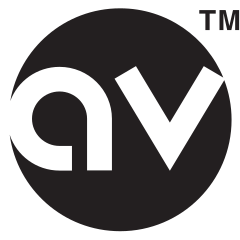Difference between revisions of "Amusement Vision"
From Sega Retro
| Line 18: | Line 18: | ||
Following a corporate restructure, Amusement Vision would become [[New Entertainment R&D Dept.]] in 2005. | Following a corporate restructure, Amusement Vision would become [[New Entertainment R&D Dept.]] in 2005. | ||
| − | == | + | ==Current members== |
{{multicol| | {{multicol| | ||
| + | *[[Akiko Yoshizawa]] | ||
| + | *[[Akira Yamanaka]] | ||
*[[Daisuke Sato]] | *[[Daisuke Sato]] | ||
*[[Eigo Kasahara]] | *[[Eigo Kasahara]] | ||
| + | *[[Haruyoshi Tomita]] | ||
| + | *[[Hideki Naganuma]] | ||
| + | *[[Hidenori Shoji]] | ||
*[[Hiroyuki Sakamoto]] | *[[Hiroyuki Sakamoto]] | ||
*[[Hisashi Endo]] | *[[Hisashi Endo]] | ||
| − | |||
*[[Jun Tokuhara]] | *[[Jun Tokuhara]] | ||
*[[Junichi Yamada]] | *[[Junichi Yamada]] | ||
| + | *[[Koji Ueda]] | ||
| + | *[[Kumiko Sakurai]] | ||
| + | *[[Masae Otoshi]] | ||
| + | *[[Masayoshi Kikuchi]] | ||
| + | *[[Masayoshi Yokoyama]] | ||
| + | *[[Sakae Osumi]] | ||
| + | *[[Satoshi Mifune]] | ||
*[[Tetsuya Kaku]] | *[[Tetsuya Kaku]] | ||
*[[Toshihiro Nagoshi]] | *[[Toshihiro Nagoshi]] | ||
*[[Yukinobu Arikawa]] | *[[Yukinobu Arikawa]] | ||
| − | |cols}} | + | *[[Yutaka Ito]] |
| + | *[[Yuri Fukuda]] | ||
| + | |cols=4}} | ||
| + | |||
| + | ==Former members== | ||
| + | *[[Masanori Onogi]] | ||
==Softography== | ==Softography== | ||
Revision as of 15:33, 11 April 2021

| ||
| Amusement Vision | ||
|---|---|---|
| Founded: 2000-04-21[1] | ||
| Defunct: 2004-07-01[2], 2005-04-01 (as Division) | ||
Headquarters:
| ||
2000-04-21 2004-07-01
|
This teeny-tiny article needs some work. You can help us by expanding it.
Amusement Vision (アミューズメントヴィジョン) was a research and development division within Sega.
It was created in 2000 to act as a replacement for Sega Software R&D Dept. #4 (formerly known as Sega AM11)[3]. Just like the newly formed WOW Entertainment, Hitmaker and Sega Rosso, Amusement Vision were given a more home-centric purpose, in addition to catering the arcade market.
Sega AM2's Toshihiro Nagoshi managed the studio, with his brainchild Daytona USA seeing an Amusement Vision-led upgrade in the form of Daytona USA 2001.Amusement Vision's big success was the Monkey Ball franchise, one of the most notable post-Dreamcast successes. They were also responsible for the critically acclaimed F-Zero GX. Based on these successes, Nagoshi was allowed to further develop home console projects in the future, while other studios returned to be arcade-centric.
Following a corporate restructure, Amusement Vision would become New Entertainment R&D Dept. in 2005.
Contents
Current members
- Akiko Yoshizawa
- Akira Yamanaka
- Daisuke Sato
- Eigo Kasahara
- Haruyoshi Tomita
- Hideki Naganuma
- Hidenori Shoji
- Hiroyuki Sakamoto
- Hisashi Endo
- Jun Tokuhara
- Junichi Yamada
- Koji Ueda
- Kumiko Sakurai
- Masae Otoshi
- Masayoshi Kikuchi
- Masayoshi Yokoyama
- Sakae Osumi
- Satoshi Mifune
- Tetsuya Kaku
- Toshihiro Nagoshi
- Yukinobu Arikawa
- Yutaka Ito
- Yuri Fukuda
Former members
Softography
NAOMI
- Slashout (2000)
NAOMI GD-ROM
- Spikers Battle (2001)
NAOMI 2
- Virtua Striker 3 (2001)
NAOMI 2 GD-ROM
- Virtua Striker 3 (2001)
Hikaru
- Planet Harriers (2000)
Dreamcast
- Daytona USA 2001 Taikenban (2000)
- Daytona USA 2001 (2000)
Game Boy Advance
- Super Monkey Ball Jr. (2002)
GameCube
- Super Monkey Ball (2001)
- Virtua Striker 3 Ver. 2002 (2002)
- Super Monkey Ball 2 (2002)
- F-Zero GX (2003)
- Super Monkey Ball 2 Pack (2004)
Triforce
- Virtua Striker 3 Ver. 2002 (2002)
N-Gage
- Super Monkey Ball (2003)
Magazine articles
- Main article: Amusement Vision/Magazine articles.
External links
References
| Timeline of Sega of Japan research and development divisions |
|---|
|
83
84
85
86
87
88
89
90
91
92
93
94
95
96
97
98
99
00
01
02
03
04
05
06
07
08
09
10
11
12
13
14
15
16
17
18
19
20
21
22
|